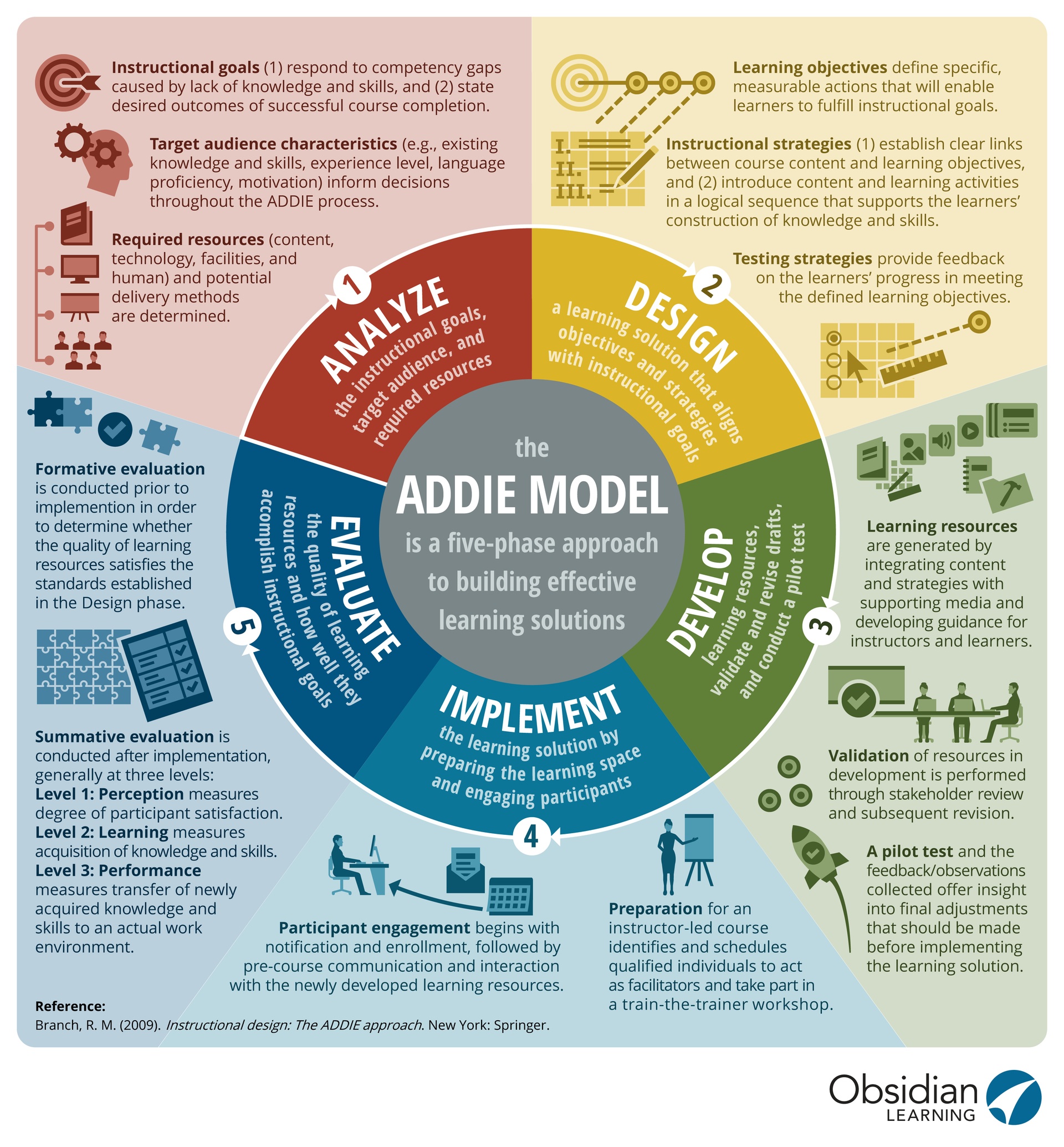ADDIE
Introduction
The ADDIE model was created by Florida State University for the military in the 1970s. The name of the model is an acronym for the 5 stages of design: Analysis, Design, Development, Implementation, and Evaluation and was meant as a guideline to create effective training and instructional materials. The model was intended to lead the IDs or faculty to complete each phase before moving on to the next. Over the years the steps have been revised with the model becoming more dynamic and interactive than the original.
One of the advantages of the ADDIE Model is its flexibility. It can be used to develop instructional material for both individualized and traditional instruction and the phases can be adapted to suit the user’s needs. One criticism of the ADDIE model is that it is considered a linear process model and can be more time consuming than other more flexible models.

Find more education infographics on e-Learning Infographics
References
Branch, R. M., & SpringerLink (Online service). (2009). Instructional design: The ADDIE approach (1st.;1st; ed.). Boston, MA: Springer-Verlag US. doi:10.1007/978-0-387-09506-6
Larson, M. B. (2014). Streamlined ID: A practical guide to instructional design. New York: Routledge.
Molenda, M. (2015). In search of the elusive ADDIE model: Performance improvement. Performance Improvement, 54(2), 40-42. doi:10.1002/pfi.21461
Piskurich, G. M. (2015). Rapid instructional design: Learning ID fast and right (Third;3; ed.). Hoboken, NJ: John Wiley & Sons.
